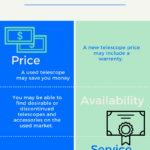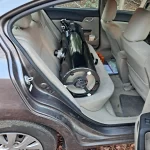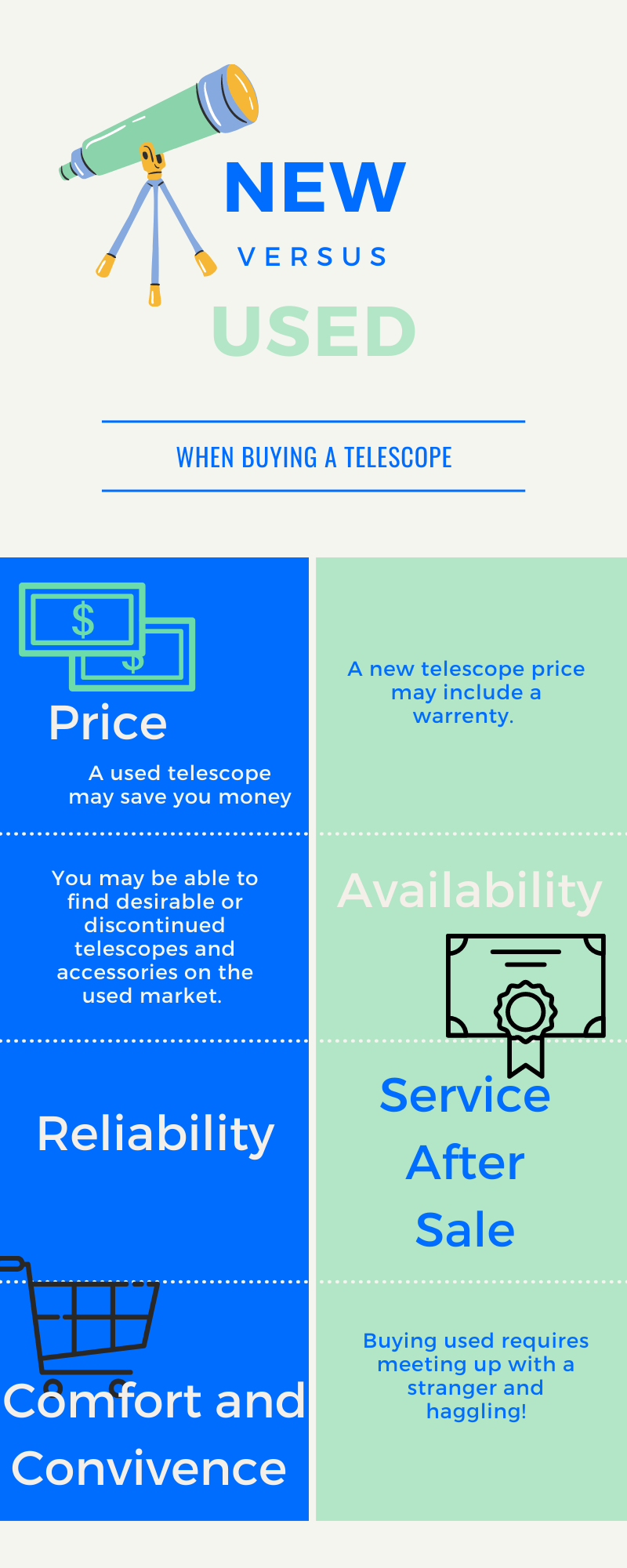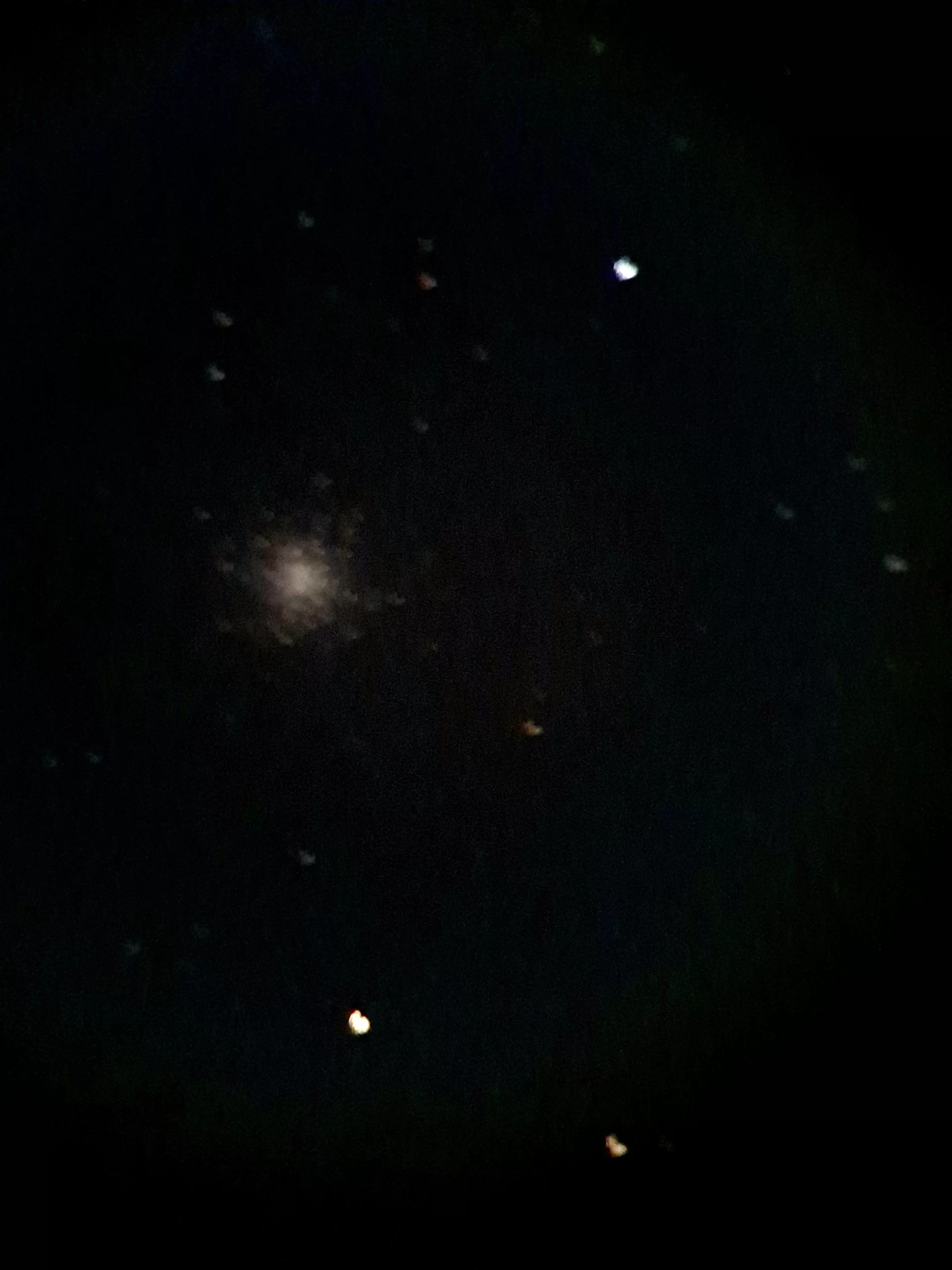Astronomy is always a part of my vacation plans, if we are flying there are a few ways you can enjoy astronomy while traveling.
Telescopes are allowed on planes as long as they meet the size requirements. If you hope to carry on a telescope you will need a travel telescope as most exceed carry on size and weight limits. A good pair of binoculars or a camera with a telephoto lens are other great options for observing while traveling. With proper packing a telescope can also be checked.
TSA has actually made themselves available to answer questions about luggage on Facebook Messenger and Twitter. You can find links to their profiles here. You can ask them about the specific equipment you hope to bring with you on your trip.
If we are talking about a short trip, I recommend you skip the hassle of bringing your large telescope and bring a pair of binoculars.
I have an affordable pair of binoculars and I have found it to be a very enjoyable way to observe when I do not have time to set up my larger telescope.
For astrophotography a camera with a telephoto lens is a great option.
About a year ago I was hosting an outreach and another astronomer saw me and stopped. He had a large telephoto lens and a simple tripod. The setup was so simple and so portable. I was not into photography yet, but this was impressive even then.
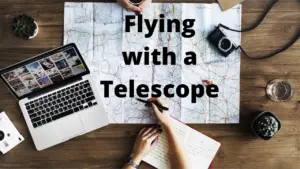
Packing a Telescope on a Plane
Depending on your telescope you may be able to bring it on the plane as a carry on or checked bag.
Start by packing up the scope and check to see if it meets size and weight requirements.
These are the stated requirements directly from the websites of the major airlines, but if you are not sure please reach out to the airline you will be using.
| Airline | Carry On Size | Personal Items Size |
| Allegiant Air | 9 x 14 x 22 inches (22.9 x 35.6 x 55.9 centimeters) | 7 x 15 x 16 inches (17.8 x 38.1 x 40.6 centimeters) |
| American Airlines | 22 x 14 x 9 inches / 56 x 36 x 23 centimeters | 18 x 14 x 8 inches (45 x 35 x 20 cm). |
| Delta Airlines | 22” x 14” x 9” (56 cm x 35 cm x 23 cm) | No stated size requirement |
| Frontier Airlines | 10″D X 16″W X 24″H | 8″D X 18″W X 14″H |
| Hawaiian Airlines | 9L x 14W x 22H or 45 linear inches (114 cm) (length + width + height) | No stated size requirement |
| JetBlue | 22″ L (55.88 cm) x 14″ W (35.56 cm) x 9″ H (22.86 cm). | 17″ L (43.2 cm) x 13″ W (33 cm) x 8″ H (20.32 cm). |
| Southwest Airlines | 10 x 16 x 24 inches | 18.5 x 8.5 x 13.5 inch |
| Spirit Airlines | 22 x 18 x10 inches (56 x 46 x 25 cm) | 18 x 14 x 8 inches (45 x 35 x 20 cm) |
| United Airlines | 9 inches x 14 inches x 22 inches (22 centimeters x 35 centimeters x 56 centimeters) | 9 inches x 10 inches x 17 inches (22 centimeters x 25 centimeters x 43 centimeters) |
When you get your gear together and measure it, you will find that most telescopes will not fit as a carry on bag.
If you choose to check your telescope you need to check the weight of the scope.
Most airlines have a weight limit for checked baggage.
| Airline | Checked Baggage Weight Limit |
| Allegiant Air | 40 Pounds |
| American Airlines | 50 pounds for economy, 70 pounds for business |
| Delta Airlines | Under 50 pounds |
| Frontier Airlines | Less than 50 pounds |
| Hawaiian Airlines | 50 pounds or 70 pounds at regular rate depending on your ticket. |
| JetBlue | 50 pounds at regular rate, up to 99 pounds with a fee |
| Southwest Airlines | 50 pounds at regular rate, 51-100 pounds for $75 |
| Spirit Airlines | 40 pounds at regular rate, no bags may exceed 100 pounds |
| United Airlines | 50 Pounds in economy 70 pounds for loyalty program and in business and up |
So while you may be able to check your telescope there may be overweight and oversized fees.
For the cost of those fees you could buy a solid pair of binoculars which would serve you well for years.
Can you bring a telescope on a plane?
Telescopes are allowed on planes as long as they meet the size and weight limits of the airline. Telescopes that are small enough to travel with may have special travel cases that you can purchase from the manufacturer. If possible bring the telescope as a carryon bag, as it is less likely to be damaged with you.
I read a comment by one astronomer who checked his telescope and when it was inspected the drive shaft on the goto motors was bent. Ruining the whole trip to the dark site.
If you need to travel with a large telescope consider shipping it ahead packed securely with a trusted carrier service. Shipping gives you more protection than checking a telescope. Get the insurance and pack it in original boxes or a hard sided case.
There are lots of telescopes designed for travel, if you tend to fly often, choose a telescope you can carry on.
Here are a few options to start your search.
Celestron NexStar 6se
Televue tv85
NexStar 4SE
There are options at many price points, sizes and capabilities. If you ask 10 astronomers, 9 of them will tell you to get a good pair of binoculars.
I tend to think this is a bit over recommended as a substitute for a telescope. If you want to travel with a scope and you have the budget for it, get a travel telescope.
Binoculars are a great tool, they are a great starting place and they will help you learn the night sky, but it is not the same as a telescope.
What is the best travel telescope?
I do not fly often, but if I did, I would buy a travel telescope, while binoculars are a good tool for what they are, they do not compare to a real telescope.
Celestron NexStar 6se is the scope I would buy if I was buying a travel telescope today. It is compact enough to be carried on the plane, but the quality is high enough that it would be worth bringing on your trip. It has goto and it is fast and simple to set up. It is just 43 pounds including the base. The optical tube is just 16 inches long, and it has a soft sided case that can be purchased separately from Celestron.
It is an F10 scope, which means that it is better for astrophotography, which is a new passion of mine.
Another affordable option would be a tabletop Dobsonian. These can be had for less than $200, and they are ultra portable. You would need to consider where you would set up and where you would sit to observe.
The small aperture means that you will not see as much as you would with a larger Dob, but if your site is very dark it will still be a great scope.

